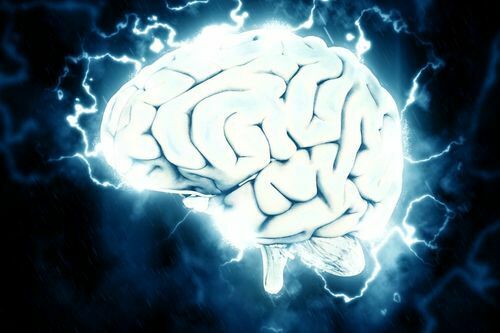Table of Contents
- Definition of the human brain
- Construction of the human brain
- Difference between grey matter and white matter
- Anatomy of neurons
- Functions of the brain
- Parts of the brain and its functions
- Meninges (protective covering for the brain)
- Brain lobes and what do they control
- Interesting facts about the human brain
- Key takeaways
- FAQs
The study of brain explores how human nervous system is controlled. The nervous system takes in information from the body’s sensory organs and sends it to the muscles. The basic anatomy of the human brain is similar to that of other animal brains, although it is larger in proportion to body size than the brains of many other mammals, including elephants, dolphins, and whales.
Definition of the human brain
The central nervous system is made up of the spinal cord and the human brain, which together make up the human nervous system. The cerebrum, brainstem, and cerebellum make up the brain. The majority of the body’s functions are controlled by this organ, which also decides which commands to provide to the rest of the body after analyzing, integrating, and coordinating the information it gets from the sense organs. The skull in the head houses and guards the brain.
Construction of the human brain

The brain is around 60% fat and weighs about 3 pounds in an adult human body. Combinations of water, protein, carbs, and salts make up the remaining 40%. The brain is not a muscle. It is made up of nerves, blood vessels, neurons, and glial cells.
Difference between grey matter and white matter
- There are two distinct parts of the central nervous system-grey matter and white matter.
- Gray matter in the brain refers to the thicker, outer layer, and white matter to the thinner, inner layer beneath.
- This arrangement is reversed in the spinal cord, where the grey matter is located within and the white matter is.
- Axons, the lengthy stems connecting neurons and covered with myelin, make up the majority of white matter while neuron somas, the round core cell bodies, make up the majority of grey matter (a protective coating).
- The two appear as separate shades on some scans because of the differences in the composition of the neuron components.
Anatomy of neurons
Each area of the brain performs a distinct function. White matter transports information to various regions of the nervous system, while grey matter is principally in charge of processing and interpreting it. The study of the brain further explores the abilities of the brain and how they can be developed.
Functions of the brain
- The brain uses electrical and chemical impulses to communicate with the rest of the body. Your brain interprets each signal, which controls a distinct process. Some signals might make you feel worn out, while others might make you uncomfortable.
- Some messages are stored in the brain, while others are transmitted to distant ends through the spine and the extensive network of nerves in the body. The central nervous system uses billions of neurons (nerve cells) to accomplish this.
Parts of the brain and its functions
Parts of the brain and its functions are the most important in the study of brain. The cerebrum, brainstem, and cerebellum are the three main components of the brain.
Cerebrum
Gray matter (the cerebral cortex) and white matter make up the cerebrum, situated on the front side of the brain. It is the largest part of the brain that regulates temperature as well as initiates and synchronizes movement.
Speech, judgment, thinking and reasoning, problem-solving, emotions, and learning are all made possible by different regions of the cerebrum. Other functions deal with the senses of sight, sound, and touch mechanism.
Cerebral cortex
The term ‘cortex,’ which is Latin for ‘bark,’ refers to the cerebrum’s outer layer of grey matter. Due to its folds, the cortex has a huge surface area and makes up nearly half of the weight of the brain.
Brainstem
The cerebrum and spinal cord are linked by the brainstem, which is in the center of the brain. The midbrain, pons, and medulla are all parts of the brainstem. The spinal cord passes through a sizable aperture at the base of the skull from the medulla’s bottom. The spinal cord, which is supported by the vertebrae, transmits and receives signals between the brain and the rest of the body.
Meninges (protective covering for the brain)

- The brain and spinal cord are encased in three layers known as meninges. It protects the brain from trauma and injury.
- The topmost layer, dura mater is substantial and resilient. It has two other layers- the meningeal layer and the periosteal layer. The meningeal layer is located beneath the periosteal layer of the dura mater, which lines the inner dome of the skull.
- A web-like layer of thin connective tissue, the arachnoid mater is devoid of blood vessels and nerves.
- The brain’s surface and its contours are surrounded and followed by a thin membrane called the pia mater. Veins and arteries run throughout the pia mater.
Brain lobes and what do they control
The brain lobes are extensively covered in the study of brains. The frontal, parietal, temporal, and occipital lobes are the four portions that make up each cerebral hemisphere (part of the cerebrum). Each lobe controls some specific body functions.
Frontal lobe
The frontal lobe, the largest part of the brain, controls personality traits, judgment, and movement. It is situated in the front of the head. The frontal lobe is responsible for functions like voluntary movement and expressive language. Broca’s region, which is connected to speech capacity, is also located in the frontal lobe.
Parietal lobe
The parietal lobe, located in the middle of the brain, aids in object identification and the comprehension of spatial relationships, which include comparing one’s body to the surroundings. The interpretation of touch and pain experienced by the body also involves the parietal lobe. Wernicke’s region, which helps the brain in understanding spoken language, is located in the parietal lobe.
The occipital lobe
The occipital lobe is the portion in the rear of the brain that regulates vision.
Temporal lobe
The temporal lobes on the sides of the brain have a role in short-term memory, speech, musical rhythm, and to some extent, smell perception.
Interesting facts about the human brain
- The brain is incapable of multitasking. Instead, it shifts between tasks, which lengthens the process and increases errors.
- The human brain grows triple in size in the first year after birth and completes its maturation at age 25.
- Humans use their entire brains all the time, not just 10% of it.
- A modest lightbulb can be powered by the 23 watts of electrical energy produced by the human brain.
- Information can be transferred at the remarkable speed of 268 miles per hour in the human brain. An electrical impulse is produced when a neuron is triggered and it moves from cell to cell.
- Brain tissue, which is the size of a grain of sand, has 100,000 neurons and 1 billion synapses.
- The spinal cord serves as the primary source of communication between the brain and the body. Neurons in the brain and spinal cord die as a result of ALS, also known as amyotrophic lateral sclerosis, which affects the ability to coordinate muscle movement.
Key takeaways
- The study of the brain deals with how the brain influences the neurological system of humans. Information is gathered by the neurological system from the body’s sensory organs and sent to the muscles.
- In an adult human body, the brain weighs roughly 3 pounds and contains about 60% fat. The remaining 40% is made up of water, protein, carbohydrate, and salt combinations. The brain does not function like a muscle. It is composed of glial cells, neurons, blood vessels, and nerves.
- The cerebrum is one of the three primary components of the brain. It is made up of the right and left hemispheres. The second one is the cerebellum. Its purpose is to maintain posture and muscle coordination. The last one is the brainstem, which serves as a relay hub for the spinal cord, brain, and cerebellum.
Did you find this blog informative? If so, please share your thoughts in the comments section below. Click here to contact us for more information on the study of brain. We would be happy to assist you with your queries.
Liked this blog? Read next: Health and fitness | The lifestyle you deserve
FAQs
Q1. How do psychologists study the brain?
Ans- EEG is a method that uses electrodes to capture the electrical activity generated by the brain’s neurons all around the participant’s head. Because the brain wave patterns are known to vary depending on the state, an EEG can determine whether a person is asleep, awake, or under anesthesia.
Q2. What is a brain scientist?
Ans- Cognitive psychologists, often known as brain scientists, investigate how the human brain functions, including how humans think, remember and pick up new information.
Q3. What are the 3 parts of the brain?
Ans- The forebrain, midbrain, and hindbrain are the three fundamental parts of the brain.






